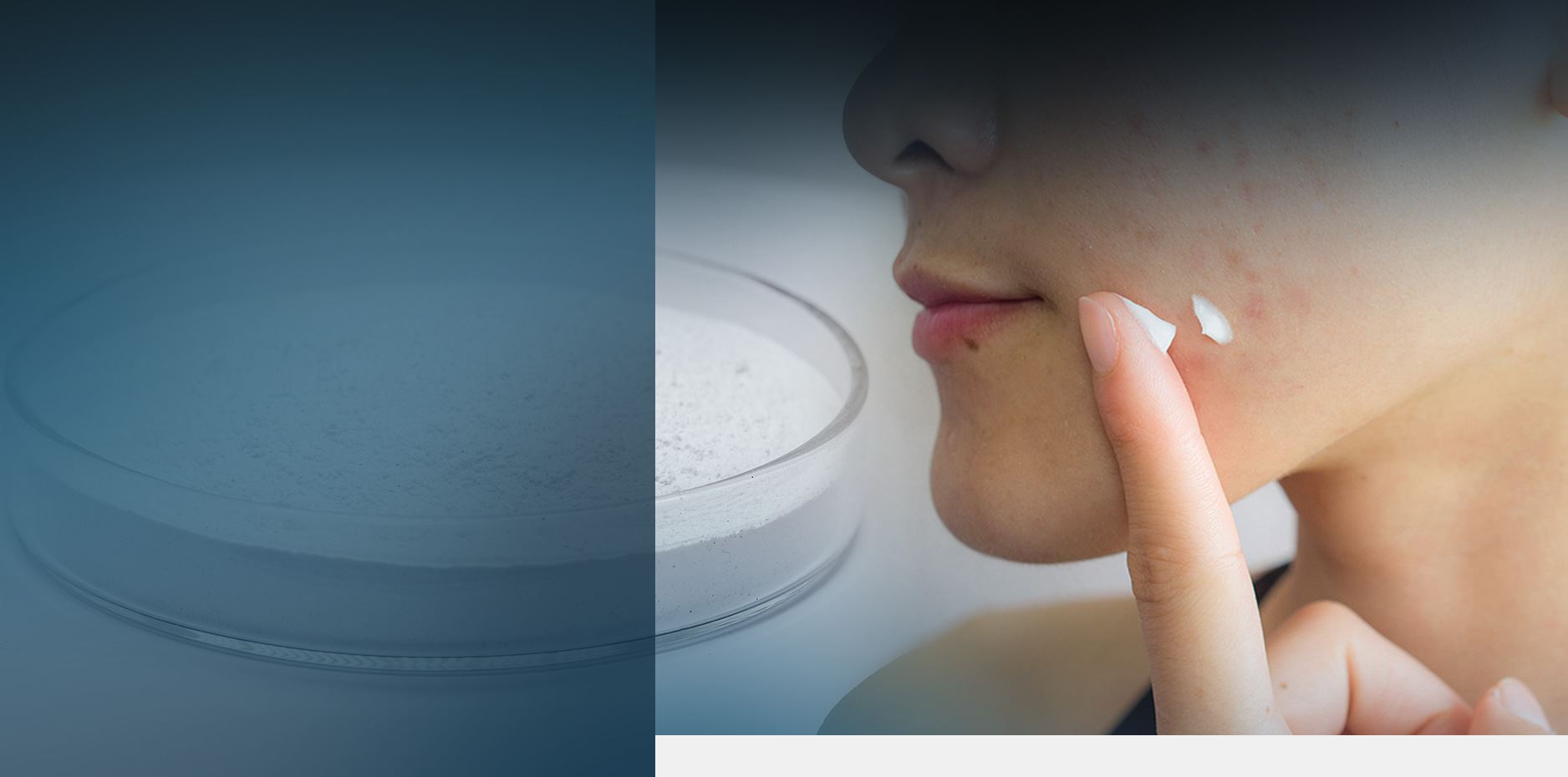
BENZOYL PEROXIDE LAWSUIT
Benzoyl Peroxide Class Action Lawsuit Update - July 2024
Wisner Baum attorneys have filed several class action lawsuits against acne product manufacturers alleging benzoyl peroxide degrades into benzene under normal use and handling. Benzene is a dangerous and potent human carcinogen that causes blood cancers including acute myelogenous leukemia (AML) and myelodysplastic syndrome (MDS) and other serious health effects.
Popular acne treatment products like Proactiv, CVS Health, Walmart Equate Beauty, Walgreens, Clearasil, Neutrogena, Target Up & Up, La Roche, and SLMD Skincare (founded by Dr. Sandra Lee, or “Dr. Pimple Popper”) are formulated with benzoyl peroxide that degrades to benzene when exposed to normal use and handling conditions.
Yes. Class action attorneys R. Brent Wisner and Stephanie B. Sherman represent Plaintiffs across the United States who bought acne treatment products formulated with benzoyl peroxide believed to be safe. Benzene was discovered in these products in 2023 after a shocking report from an independent laboratory found dangerous levels of benzene in numerous acne treatments with benzoyl peroxide, including popular and widely available face washes, topical creams, and other products.
U.S. Food and Drug Administration (FDA) guidelines stipulate that benzene must not be used to make pharmaceutical products because of the unacceptable toxicity and deleterious environmental effects. However, FDA allows one limited exception—where the use of benzene in a drug product is unavoidable to produce a drug product with a significant therapeutic advance, benzene levels cannot exceed 2 parts per million.
According to the Valisure acne product report, the levels of benzene in several widely used benzoyl peroxide acne products were significantly higher than the FDA’s guideline of 2 ppm. Nearly all of the benzoyl peroxide acne products tested produced well over the 2 ppm limit. Additionally, acne treatments that were tested emitted substantial amounts of benzene from their original packaging, even when closed.
Despite an FDA safety alert issued in 2022 on the dangers of benzene in consumer products and a directive to ensure companies test for benzene, the acne product manufacturers continued to sell products formulated with benzoyl peroxide, prioritizing profits over consumer safety. The companies knew or should have known that their products would degrade and form benzene, especially considering the degradation of benzoyl peroxide to benzene was first reported in scientific literature as early as 1936.
“What shocked me the most after seeing this report is that benzene contamination is not a new phenomenon; scientists have known about this issue for decades,” says class action attorney Stephanie B. Sherman. “The FDA alerted manufacturers about this very issue, essentially telling them to test their products to ensure they are safe and free of benzene. They willingly chose to ignore the FDA and their primary obligation to sell only safe drugs, and in the process, failed to warn millions of consumers about known dangers. They knew their products were dangerous, but they also knew that if they did what they were supposed to do and warned people about the potential for benzene contamination, no one would ever buy their products. So they buried their heads in the sand, deciding that profits are more important than people. They need to be held accountable.”
If you used any of the following products to treat acne, you may have a claim in the benzoyl peroxide class action:
- Asepxia Acne Spot Treatment Cream for Pimples and Blackheads
- Estee Lauder Clinique Acne Solutions All-Over Clearing Treatment
- CVS Health Acne Control Cleanser
- CVS Health Acne Treatment Cream
- Johnson & Johnson Clean & Clear Continuous Control Benzoyl Peroxide Acne Face Wash
- Johnson & Johnson Persa-Gel® 10
- La Roche-Posay Effaclar Duo Dual Acne Treatment
- Neutrogena Rapid Clear Stubborn Acne Spot Gel
- Neutrogena Stubborn Acne AM Treatment
- Neutrogena Stubborn Marks PM Treatment
- Neutrogena On-The-Spot Acne Treatment Gel with Benzoyl Peroxide
- PanOxyl 10% Benzoyl Peroxide Acne Foaming Wash
- PanOxyl 10% Benzoyl Peroxide Acne Treatment Bar
- PanOxyl 4% Benzoyl Peroxide Acne Creamy Wash
- Proactiv Emergency Blemish Relief
- Proactiv Solution® Renewing Cleanser
- Proactiv Solution® Repairing Treatment
- Proactiv+ Pore Targeting Treatment
- Proactiv+ Skin Smoothing Exfoliator
- RB Health Clearasil Rapid Rescue Spot Treatment Cream
- RB Health Clearasil Stubborn Acne Control 5 in 1 Spot Treatment Cream
- RB Health Clearasil Ultra Rapid Action Treatment Cream
- SLMD Skincare Benzoyl Peroxide Acne Lotion
- Target Up & Up Acne Spot Treatment
- Target Up & Up Maximum Strength Acne Medication
- Walgreens Daily Creamy Benzoyl Peroxide Acne Face Wash
- Walgreens Maximum Strength Acne Foaming Wash
- Walmart Equate Beauty 10% Benzoyl Peroxide Acne Treatment Gel
- Walmart Equate Beauty Acne Facial Cleansing Wash
- Walmart Equate Beauty Daily Acne Control Cleansing Cream
Not sure if you used one of these products? Check out our detailed product list with pictures.
Yes, if you used any of the products listed above and live in the following states, you may be eligible to join the benzoyl peroxide class action.
The class action attorneys at Wisner Baum are seeking class representatives in the following states:
- Connecticut
- Hawaii
- Massachusetts
- Maryland
- Missouri
- Nevada
- New York
- Ohio
- Pennsylvania
- Rhode Island
- Washington
If you are a resident in any of the above states and you purchased any of the products listed above, you may be able to join the benzoyl peroxide lawsuit. Please contact us today to see if you qualify.
July 17, 2024: Wisner Baum attorneys will attend the Benzoyl Peroxide MDL hearing next week. We will provide news on the litigation in the coming weeks.
June 6, 2024: Class action attorneys from Wisner Baum recently filed a motion to coordinate over 30 benzoyl peroxide cases into a multidistrict litigation (MDL). Attorneys filed a Motion for Transfer of Actions under 28 U.S.C. § 1407 for Coordination or Consolidated Pretrial Proceedings with the United States Judicial Panel on Multidistrict Litigation requesting transfer and centralization of all BPO putative class actions in the Northern District of California, Central District of California, or the Eastern District of California.
April 8, 2024: Benzoyl peroxide lawyers filed more cases recently. The latest acne product lawsuits were filed against L’Oreal USA Inc., which makes CeraVe, and Crown Laboratories Inc., which makes PanOxyl. The allegations in the complaints mirror the allegations filed in our lawsuits last month. The acne products cited in the class action complaints allegedly contain dangerously high levels of benzene, which attorneys say is a result of product degradation.
March 11, 2024: Our law firm has filed nearly a dozen class actions in state and federal courts alleging several of the companies listed above marketed and sold acne treatment products to teens and adults without warning consumers that the products contained unsafe levels of benzene, a potent carcinogen. You can read an example case complaint here.
We filed these class actions following the report from Valisure, which found that some acne face washes and creams had benzene levels 800 times greater than the FDA’s maximum amount allowed in any U.S.-regulated pharmaceutical. Reported benzene levels reached as high as 1700 ppm for Proactiv and 1600 ppm for Target's Up & Up.
In a Citizen's Petition to the FDA, Valisure demanded an immediate benzoyl peroxide recall to protect public health.
In its Citizen Petition to the FDA, Valisure called on the agency to issue a recall on benzoyl peroxide products while the issue is investigated. Dozens of products were found to contain benzene at levels above the FDA’s maximum allowable limit.
But the agency has taken no such action to issue a benzoyl peroxide recall. As attorneys pursuing lawsuits against the manufacturers of these benzoyl peroxide acne products, we feel this is unacceptable.
“Outside of the legal cases, nothing has been done to address this very serious issue,” says attorney Stephanie Sherman. “If the FDA is not going to take action, the companies should issue voluntary recalls and do the appropriate testing to be sure their products are safe.”
There is precedent for issuing recalls due to benzene contamination. Over the last couple of years, dry shampoo companies issued multiple recalls over benzene. Unilever issued a recall for 19 dry shampoos due to possible benzene contamination, and Procter & Gamble recalled dozens of products for the same contamination issue.
Sunscreen manufacturers have also issued recalls due to benzene, including Johnson & Johnson.
The benzoyl peroxide class actions are about dangerous amounts of benzene in certain acne products. Valisure is an accredited independent laboratory that uses validated analytical methods to test drugs and other consumer products to address rising concerns about public safety and lack of transparency. In its testing of nearly 100 acne products, the results were shocking: Most, if not all, benzoyl peroxide acne products “could form substantial amounts of benzene.”
Single lots of acne products formulated with benzoyl peroxide (both over the counter and prescription) were tested for benzene at common storage temperatures at or above 37°C (human body temperature). The tested products included, among others:
- Clean & Clear 10% Benzoyl Peroxide Lotion
- Clearasil 10% Benzoyl Peroxide Cream
- CVS Health 10% Benzoyl Peroxide Face Wash
- Equate Beauty 10% Benzoyl Peroxide Cleanser
- Equate Beauty 2.5% Benzoyl Peroxide Cleanser
- La Roche Posay Benzoyl Peroxide Cream
- Neutrogena 10% Benzoyl Peroxide Cleanser
- Proactiv 2.5% Benzoyl Peroxide Cleanser
- Target Up & Up 2.5% Benzoyl Peroxide Cream
- Walgreens 10% Benzoyl Peroxide Cream
The testing found that all benzoyl peroxide acne products could form benzene. Furthermore, the tested acne products were not chemically stable and yielded benzene at levels well over 2 ppm, the FDA’s conditionally restricted benzene limit for drug products. Some of the benzene levels found in testing were multiple times higher than 2 ppm. Proactiv’s 2.5% BPO Cream and Target’s Up & Up 2.5% BPO Cream produced benzene levels as high as 1,600 ppm.
Perhaps more alarming, the tested acne treatments emitted large amounts of benzene from the original packaging, even when the packaging was closed.
According to the class action attorneys, Valisure’s report confirms that most on-market BPO products contain unsafe levels of the potent human carcinogen benzene and are at risk of degrading into benzene under normal use, handling, and storage conditions. “These companies are exposing consumers and children to a serious risk of harm without their knowledge and consent,” says attorney Stephanie Sherman.
Class action attorneys say that had the manufacturers warned about the potential for the acne products to degrade into benzene, teens and other consumers would have avoided purchasing them to treat pimples, blemishes, and other acne symptoms.
Class action lawsuits involve named plaintiffs representing a larger group, known as the class. The class action attorneys file the complaint on behalf of the plaintiffs who stay actively involved throughout the litigation. Unnamed plaintiffs have the option to join the class or resolve their claims independently (more on this below).
The defendant company (or defendants, in the case of the benzoyl peroxide class action) responds to the complaint by either denying the allegations and claims or filing motions to challenge the lawsuit's validity and seek dismissal.
Discovery is the next phase, where both sides exchange documents, ask questions, and take depositions. After completion, the class attorneys may file a motion to certify the class action, which the defendant can object to.
The court holds a hearing to decide if the class action will be certified, evaluating if the proposed class shares common claims, if the named plaintiffs represent the class, and if the class size is sufficient. Class certification is often a significant obstacle for plaintiffs. If the class is certified, the defendants usually resolve the case with a settlement agreement, though some class actions proceed to trial.
The outcome of the class action applies to all class members, whether through settlement or trial.
Class actions can take months or years to resolve, with some exceptions. The time it takes to resolve the case depends on factors such as:
1. Class certification process: It can take months or years before the class is certified, and notices may be sent to potential class members.
2. Preparation for trial: Gathering evidence, hiring witnesses, creating reports, and conducting depositions can extend the timeline, especially in complex cases.
3. Settlement or verdict: Many class actions end in a settlement, requiring approval from the judge before distributing compensation. If no settlement is reached, the case may proceed to trial.
Once the case concludes, class action attorneys notify eligible class members, allowing them to join or opt-out. This process can be time-consuming, particularly if numerous individuals are involved.
Most class action lawsuits seek minor compensation for those harmed by deceptive or wrongful corporate behavior. While the individual amounts may not seem significant in this case, some people spent hundreds of dollars or more on these acne treatments over time. This case is not just about the money; the collective impact of this litigation could also send a significant message to companies involved that failing to properly test products to ensure safety comes with consequences.
Benzoyl peroxide is a widely used ingredient in topical creams, cleansers, scrubs, and washes for use on the face and body to treat and control acne. Acting as an effective antiseptic, it can reduce the presence of bacteria on the skin's surface, which can reduce pimples and blemishes.
Recommended as one of the initial remedies for mild to moderate acne, benzoyl peroxide acne products can be conveniently obtained over the counter in the form of a gel or face wash. Most OTC acne treatment products contain less than 5% benzoyl peroxide, though some can have 10%. Neutrogena Rapid Clear and Equate Beauty Benzoyl Peroxide Acne Treatment Gel both have 10% benzoyl peroxide.
Expanding beyond purely medical channels, numerous popular skincare brands incorporate benzoyl peroxide in their product lines in lower concentrations. These milder alternatives can be purchased from pharmacies, supermarkets, and shops. Clean & Clear, Neutrogena, and Clearasil are among the most widely purchased treatments for mild acne.
While benzoyl peroxide is itself a relatively benign chemical compound, data from a study using mice known to be highly susceptible to cancer found that benzoyl peroxide acts as a tumor promoter. The clinical significance of the mice study findings is not known.
According to the acne product class action, when mixed with other ingredients and then packaged, sold, and stored by retailers, distributors, and consumers under expected environmental conditions, benzoyl peroxide products can degrade into a carcinogen called benzene.
Benzene, a colorless and flammable liquid with a sweet odor, is a chemical widely used in various industries in the U.S. While it occurs naturally through processes like volcanic activity and forest fires, the majority of human exposure to benzene stems from workplace or environmental exposure. Common examples of benzene exposure include crude oil, gasoline, motor vehicle exhaust, and cigarette smoke.
Although it was once frequently utilized as an industrial solvent and gasoline additive, its use has significantly diminished over recent decades. However, benzene can still be found in a wide array of products and is particularly employed in the production of plastics, resins, lubricants, rubbers, dyes, detergents, drugs, pesticides, and according to class action attorneys, acne products.
The human body absorbs benzene via the lungs, gastrointestinal tract, and across the skin. Benzene penetrates human skin more rapidly than many small organic molecules, which makes dermal exposure a potentially toxic point of entry.
When a person is exposed to high levels of benzene in the air, approximately half of the benzene that is inhaled passes through the lungs and enters the bloodstream.
Benzoyl peroxide (BPO) can thermally decompose to form two molecules of benzoyloxy radicals, which can further decompose into benzoic acid or phenyl radicals with liberation of carbon dioxide. Phenyl radicals can produce end products that include phenyl benzoate, biphenyl, and benzene, depending on the chemical environment.
Benzene is a well-known human carcinogen with no known safe level of exposure. The medical literature linking benzene to blood cancers is vast dating to the 1930s. Studies have found higher rates of leukemia, particularly acute myeloid leukemia (AML), in workers exposed to high levels of benzene. Industries such as chemical manufacturing, shoemaking, and oil refining have shown elevated rates of leukemia among employees.
Some studies have also suggested potential connections between benzene exposure and childhood leukemia, including AML, as well as acute lymphocytic leukemia (ALL), chronic lymphocytic leukemia (CLL), multiple myeloma, and non-Hodgkin lymphoma in adults.
Per an FDA guidance on benzene:
“In small amounts over long periods of time, benzene can decrease the formation of blood cells. Long term exposure to benzene through inhalation, oral intake, and skin absorption may result in cancers such as leukemia and other blood disorders.”
Several other government agencies have assessed benzene and its carcinogenic potential.
International Agency for Research on Cancer (IARC): Part of the World Health Organization (WHO), designates benzene as "carcinogenic to humans," citing ample evidence linking it to AML. IARC also recognizes benzene exposure as connected to ALL, CLL, multiple myeloma, and non-Hodgkin lymphoma.
U.S. National Toxicology Program (NTP): Comprising the National Institutes of Health (NIH), Centers for Disease Control and Prevention (CDC), and Food and Drug Administration (FDA), the NTP categorizes benzene as a "known human carcinogen."
Environmental Protection Agency (EPA): Maintains the Integrated Risk Information System (IRIS), an electronic database that examines the human health effects of exposure to various environmental substances. The EPA classifies benzene as a known human carcinogen.
Outside of blood cancers, benzene can have short-term and long-term health effects when individuals are exposed to high levels.
Short-term exposure to high doses of benzene can impact the nervous system, leading to symptoms such as drowsiness, dizziness, headaches, tremors, confusion, and even unconsciousness. Consumption of food or fluids contaminated with high benzene levels can result in vomiting, stomach irritation, dizziness, sleepiness, convulsions, and a rapid heart rate. In severe cases, inhaling or ingesting excessive quantities of benzene can prove fatal.
Direct contact with benzene, whether in liquid or vapor form, can cause irritation to the skin, eyes, and throat, potentially leading to redness and blisters if the chemical touches the skin.
Long-term exposure to benzene primarily damages the bone marrow, the spongy center of bones that produces new blood cells. This can cause conditions such as anemia (low red blood cell count), fatigue, weakness, a low white blood cell count that diminishes the body's ability to combat infections, and a low blood platelet count that results in an increased likelihood of bruising and bleeding.
Studies also suggest that prolonged benzene exposure may harm reproductive organs. Some women exposed to high levels of benzene for extended periods have experienced irregular menstrual cycles and ovary shrinkage. However, it remains uncertain whether benzene directly caused these effects. The impact of benzene exposure on male fertility is largely unknown.
Our Case Results

-
$265 Million Settlement Fatal Train Crash
In 2016, Wisner Baum attorney Timothy A. Loranger and six other attorneys in the Plaintiffs’ Management Committee were able to secure a $265 million settlement for victims of the 2015 Amtrak 188 derailment in Philadelphia, one of the largest in the U.S. for 2016.
-
$14 Million Settlement A Major US Plane Crash
Wisner Baum obtained a $14 million settlement for the death of a passenger in a major US plane crash.
-
$12 Million Settlement Helicopter Crash
Wisner Baum secured a $12 million settlement for a passenger who was injured in a helicopter crash.
-
$10 Million Settlement A Major Foreign Plane Crash
Wisner Baum obtained a $10 million settlement for the death of a passenger in a major foreign plane crash.
-
$2.0 Billion Verdict Personal Injury
In May of 2019, the jury in the case of Pilliod et al. v, Monsanto Company ordered the agrochemical giant to pay $2.055 billion in damages to the plaintiffs, Alva and Alberta Pilliod, a Bay Area couple in their 70s.
-
$80 Million Verdict Personal Injury
Wisner Baum attorneys served on the trial team in the case of Hardeman v. Monsanto Company, which resulted in an $80 million jury verdict for the plaintiff, Edwin Hardeman.

Client-Focused Representation
REVIEWS & TESTIMONIALS
We believe our track record speaks for itself. But you don’t have to take our word for it. See what our clients have to say about working with us.
-
"I Can’t Imagine a Better Law Firm"
Multiple lawyers recommended Wisner Baum to me and I have been consistently impressed with the quality of their work.
- Best Law Firms Survey -
"They Are About Changing the Systems..."
Wisner Baum are not only amazing attorneys but more importantly, they are activists. They are about changing the systems which got us into trouble in the first place. They understand their role in the process of making change.
- Kim Witczak -
"Top Legal Minds in the Country"
The Wisner Baum firm has some of the top legal minds in the country; they are driven, determined, trustworthy, ethical and passionate.
- From Best Lawyers® Best Law Firms




.2411011325574.jpg)
